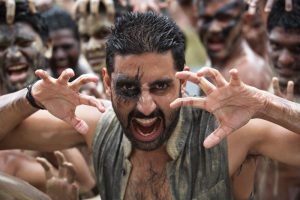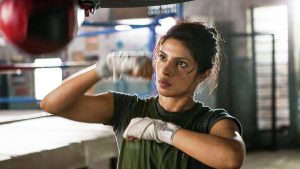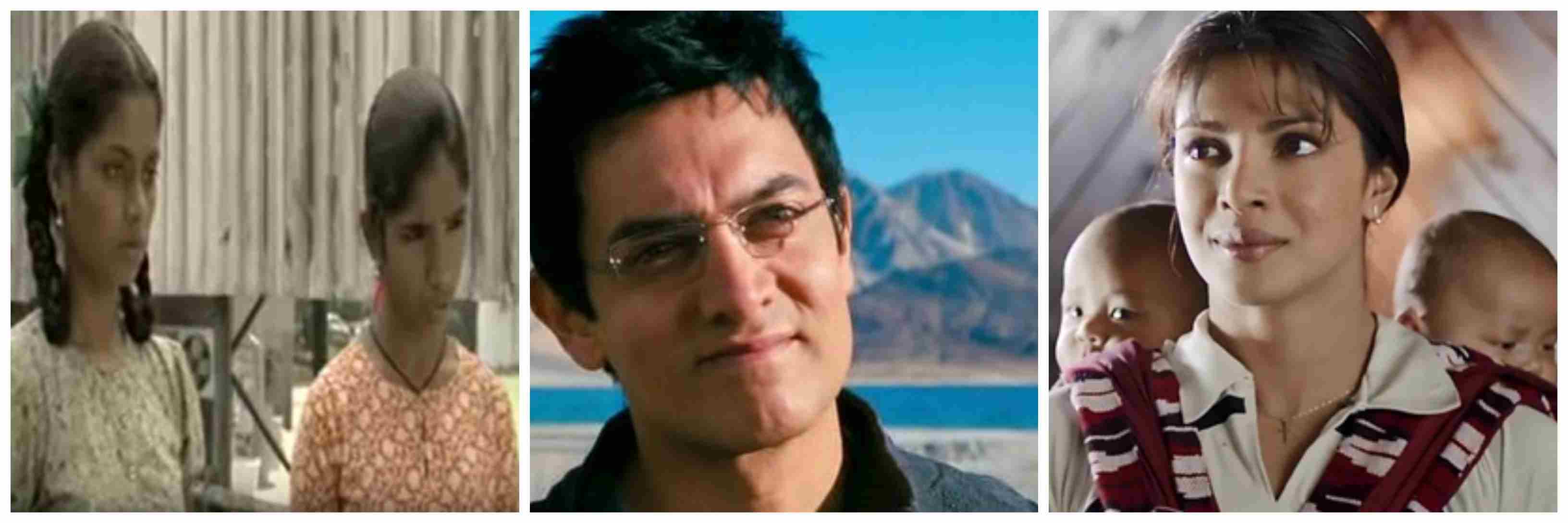Posted by Sameer Bhagat
Couple of days ago, I was talking to my friend Biju Toppo, a National Award winning documentary film-maker, and I had casually asked him, “Why Adivasi Community is invisible and unheard in the Hindi movie industry?”. Apparently, this simple question had no easy answers. Then we went on to discuss in details about the struggles and the hardships that our Adivasi community face in getting our faces seen and our voices heard.
Sadly, this fact is true not only for the Hindi movie industry but also for the other modern era communications channels, including the mainstream media, the book publications, television, internet entertainment industries, and many more. We concluded our lengthy discussions on a cheerful note, as my friend Biju assured me that I should expect positive changes, at least in the Hindi movie industry in the future. My filmmaker friend Biju was optimistic, but I am not so sure.
In India, the first feature film was made in 1913. Now this Hindi film making business has gone for more than a century with thousands of films being produced each year in India. Despite that, we can simply count with the fingers the number of movies that had Adivasi stories and characters.
Isn’t it ironic that these Adivasi players remained marginalised even in a fictionalised movie?
I hope that you all remember the movie Chak De! India that came out almost a decade ago in August 2007. It is an iconic sports movie based on the fictionalised triumphs of the Indian Women’s Hockey team at the world stage. This movie had four Adivasi players, namely, Mary Ralte, Molly Zimik, Rani Kispotta, and Soimoi Kerketta – because no Indian women’s hockey team can be complete with the inclusion of naturally talented Adivasi players in the team.
In this film, two players from Jharkhand, my home state, were shown as the players who could not speak proper Hindi. Needless to say, they did not fit in and stayed at the side-lines of this Hindi movie. Having interacted with many Adivasi hockey players from my state, I can safely say that speaking proper Hindi has never been a problem with them. Isn’t it ironic that these Adivasi players remained marginalised even in a fictionalised movie?
Few years later, in December, 2009, the block-buster movie 3 Idiots graced the movie theatres across the country. According to the numerous news reports of that period, the lead character of this youth centric movie called Phunsukh Wangdu (Ranchhoddas Chanchad or Rancho),was inspired by the real life Ladakhi tribal hero Sonam Wangchuk, who was recently awarded the Ramon Magsaysay award. However, this movie never ever dared to acknowledge Phunsukh Wangdu’s tribal roots and on the matters concerning his family, community, or culture, it barely scratched the surface of tribal culture.

Image Source: Men XP
Also read: The Adivasi Will Not Dance: “Why Should The Truth Be Whitewashed?”
It’s rather fascinating that the said movies neatly narrated the tales about the families, the communities, and the cultural backgrounds of the other leading characters. Probably that’s the way the Hindi movies make the Adivasi character(s) in our Indian society, invisible and unheard.
Almost six months later, in June 2010, another prominent Hindi movie called Raavan was released. In this big budget movie, the main antagonist was known as Beera Munda. Few of the informed movie-critics had suggested that the character Beera Munda was loosely inspired by the revered Adivasi freedom fighter, Birsa Munda. He had waged an inspiring freedom struggle against the British rule in the Chotanagpur plateau region and he belonged to the Munda Adivasi community of the Jharkhand state.
Like the movies mentioned above, this film too did not try to explore the socio-cultural lives of the Munda tribe, and this Adivasi community continued to remain hidden behind the thick cloak of script.

Image Source: Glamsham
Although I praise the “Thok de killi” song in the movie. One of the lines in this song is “Aaja mil ke bethain, haal suna dain dil ka, dilon ko khaate jayein, humkon phenkain chilka chilka” (Today let’s sit down together, and talk about the things that breaks our hearts, that they eat up the main fruit, and then toss its leftover skin for us) aptly conveys the general feeling among the Adivasi community. This rebellious song tries to express the marginalisation of the Adivasi community in our society and make their unheard voices heard.
if the mainstream Hindi cinema can make two modern day Adivasi icons invisible and unheard, then one can easily understand the plight of the Adivasi commoners.
Almost four years later, another sports based Hindi movie titled Mary Kom was released in September 2014. It was a biopic based on the life of the celebrated Manipur tribal boxer Mary Kom Hmangte. Even in a biopic of the very well-known tribal boxers from India, almost all the overt references to her tribal identity was wiped clean in the 122 minutes long movie, barring the two scenes in the movie lasting few minutes that implicitly hinted her tribal roots in the northeastern state of Manipur.

Image Source: Hollywood Reporter
It’s worth mentioning the fact that World Amateur Boxing champion Mary has won prestigious national awards like, Padma Bhushan, Padma Shri, Arjuna Award, Rajiv Gandhi Khel Ratna, et al. Still the filmmaker of her biopic had no qualms about hiding the Adivasi heritage of a world champion. In the 21st century, if the powerful mainstream Hindi movie-makers can make two modern day Adivasi icons invisible and unheard, then one can easily understand the plight of the Adivasi commoners.
Now, what’s remarkable to note here is that all the mainstream Hindi movies named above were directed by the award winning movie-making teams of the respected producers, directors, actors, musicians, script writers, cinematographers, and such. Yet, none of them objected to the content of these movies that perpetuated the age-old stereotypes and the typical clichés with respect to the less-heard Adivasi denizens of India? Mind you, these are some of the biggest names in the movie-industry. Up till this time, not even one of them has taken the lead to address the issue of the invisibility and non-hearing of the Adivasi community in their big-budgeted movies.
Ironically, one of the movies includes an actor that wants Hollywood to accept Indian actors. While, back home in India, none of these movies tried to find Adivasi actors to play these roles of the Adivasi characters. Isn’t this a contradictory stand, and a case of double standards?
Actually, I am not surprised that the Hindi movie industry simply reflects the explicit and the implicit biases inherent in our society. But, I can only wish that these big names take a moment to think about the Adivasi community, who have always been one of the most marginalised and disadvantaged socio-economic communities in the country.
Harsh reality is that our Adivasi community has yet to see the affirmative action to be taken by the Indian movie industry in the correcting the historical wrongs and break the ongoing cycle of exploitations sustained by the inequality of the caste-based social hierarchy.
As I type this, I caught the glimpses of the dubbed Hindi movie Tarzan the Heman (Vanamagan in Tamil language, released in 2017) in the television. Like so many Indian movies, this Indian film too propagates the well-ingrained racial inequality, the deep-seated prejudiced and the well entrenched discriminatory mindsets to the movie-watching general masses. Although they did try to address these societal biases against the Adivasi community in this motion-picture itself, but they lacked the finesse to pull it off in a sensitive manner.

Image Source: News X
Of late, the bunch of influential Actors in the Hollywood movie industry has taken initiative to push the two basic ideas of diversity and inclusion in the entertainment sphere for their western society. I can only hope that these two powerful ideas of diversity and inclusion should visit and get itself firmly embedded, not only in Hindi movie industry but also in the broader milieu of our Indian society.
Also read: From Bollywood To The Great Indian Middle Class: Why Does Caste Continue To Be Erased
Or else, India will remain a melting pot of diversity that makes our Adivasi community invisible and unheard, even in this modern age.
Sameer Bhagat is an author of the contemporary socio-political novel ‘Salvaging Adidweep’ which is set in the dreaded red-corridor and voices the Adivasi’s views. He is also the Founder of an online-magazine ‘Focus‘ in Jharkhand and one of his internet ventures is called TribalStuff, it promotes all things tribals. You can also follow him on Facebook and Twitter.
About the author(s)
Guest Writers are writers who occasionally write on FII.





Hurtful and very well written facts in this article that shows marginalization of Tribals from all kinds of mainstream. Even Mary Kom who has been widely celebrated as a star of India hailing from a village, could have been celebrated as a tribal star… but was used for the mainstream personal advantage than her original heritage.
Such a shame!